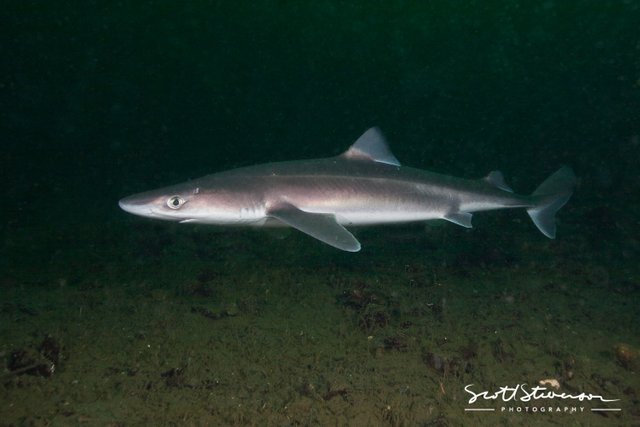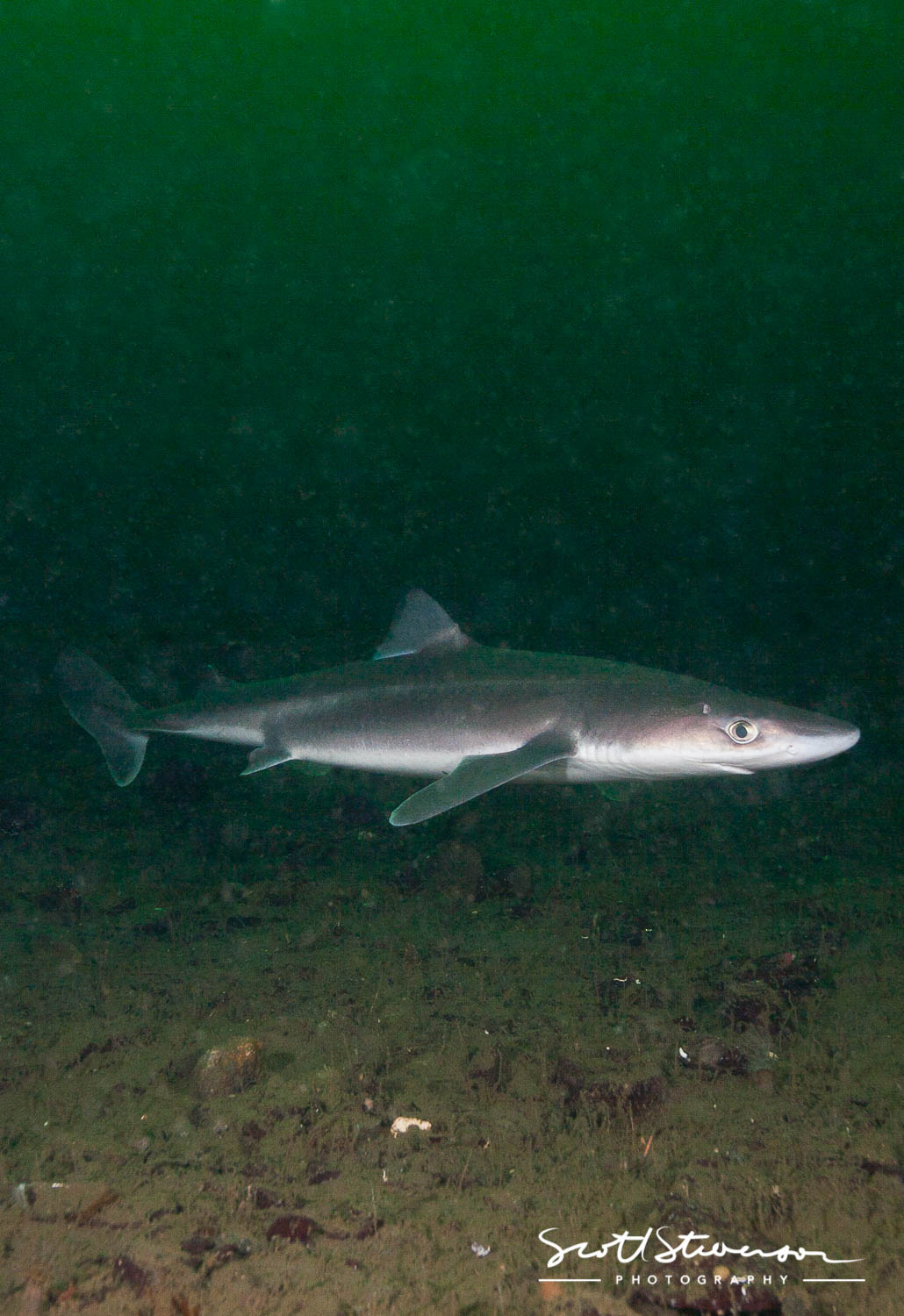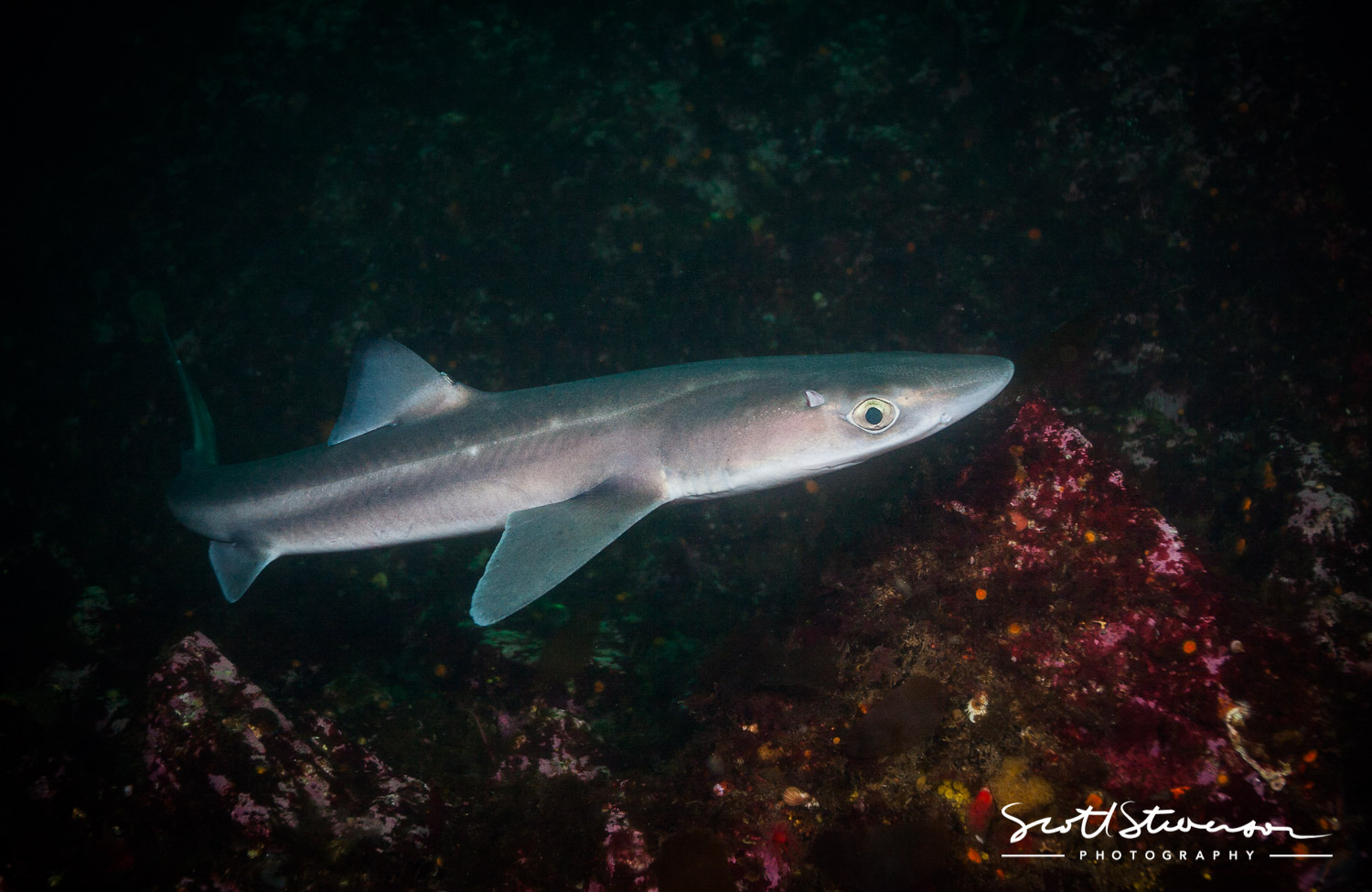Quick before they Disappear
The Spiny Dogfish, Squalus acanthias, is a small coastal shark of the second largest shark order known as Squaliformes. In this order there are seven families, and at least 130 species. The Spiny Dogfish is a member of the family Squalidae, which also has the common name of Dogfish Sharks.

All dogfish have a slender, cylindrical, and slightly flattened body type. No member of this family has an anal fin, and all species have two dorsal fins with spines.
Spiny Dogfish have a large spine on each dorsal fin, and its many common names reflect this unique body feature. Other common names include: the spurdog, piked dogfish, codshark, thornshark, and the humerus skittledog. The body of this species of shark is counter shaded, with slate gray or brown on the dorsal surface, grading into white or dirty white.

These fish inhabit the colder waters of the Atlantic and Pacific oceans from the shallows to nearly 2400 ft. (700 m.) deep. In the Pacific, Spiny Dogfish range from the Bering Sea to Baja California, with greatest abundance along the coast of British Columbia and Washington. During the summer months, divers will frequently encounter these sharks in the shallows hunting for a meal.

Growing up I fished on the weekends with my family, dogfish were something we caught on occasion and were immediately thrown back. My family as well as other fisherman hated these animals, and in some cases I saw people cut open their stomachs and throw them back live. This kind of ignorance and disdain really hit me as a kid and has always stuck with me. As an underwater image maker who loves sharing my world with each of you the thought of that kind of behavior really bothers me and these days these sharks are very rarely seen by divers. Be kind to each other and to all species.
If you are lucky enough to see one of these skittish sharks underwater and want to get an image, you must possess a great deal of patience, along with the willingness to give these creatures some space. Spiny Dogfish is curious by nature, however they will dart away if they feel even slightly threatened.

Thanks for reading.
Scott
For more stories and images - http://www.scottstevensonphotography.ca/
Thanks for sharing this information. I'm not a fan of shark anything, but I'm also emphatically not in favor of that or any kind of cruelty. I'm actually horrified. I wonder if those people ever put themselves in the place of those poor creatures and actually thought about what they were doing to another living being. It's not a beauty, but it exists for a purpose; why make one's self less than human.
thank you for your post a good topic for talking about fish, this is an endangered species? thanks for telling us about this. I'll put you my voice, I'm waiting for reciprocity)
It depends on what you read and who you listen to about how endangered this species is. If you look at the IUCN red list it is of least concern.
http://www.iucnredlist.org/details/195488/0
However other conservationist and biologist believe that all shark populations are in decline and the dogfish is included in the group.
How lovely noiseless shots they are. That too under water. Wow. May I ask @scottphoto which camera and settings you used here and how were the light? Intrigued. Kudos.
I'm shooting with a Canon 5d, 17-40mm lens in an Aquatica housing. The light I'm using are strobes from Ikelite. As for setting typically for the water around Vancouver Island f8, 1/125 ISO 200 with my strobes set on 1/2 power.
Woah man. I can only dreaam of those settings right now. I wish you muc happiness and good luck in your journey. I hope i too get somewhere as a photographer. More power to you. Keep the good work up. Curious to see more of such innovative shots.
Growing up in Ketchikan Alaska, I always had mixed emotions about these sharks. I remember one time my sister was struggling to real up a fish from the bottom and my dad was counting on a tasty halibut for dinner. Without thinking of her feelings, he exclaimed "Aw hell its a damn dogfish!" They have a huge amount of small razor sharp teeth that break your line often and at the minimum make you retie your leader. It is also best to move away from where these sharks are feeding because they feed in groups and will attack your bait faster than the game fish your are seeking. They are still very abundant up there, but take 7 years to mature and even then only give live birth to a few at a time, so cannot sustain fishery or wanton destruction. I always spoke in favor of releasing them unharmed, but have witnessed people cutting the tip of their nose off, gaffing them, or bonking them before throwing them back. Thanks for bring back the memories and I added you to my follow list.
Thanks for the story from Alaska, I took these images in a couple of different place. The darker green images where captured in Saanich Inlet, on Vancouver Island. The brighter more colourful images was taken just off a small island, Stewart Island, just off of Vancouver Island about 6 hours north of Victoria.
And I also want to hear how and where you took these photos, please!
wooow scary actally,, but beautiful indeed
Nice photo as always
Thanks for that Scott. I grew up in North Vancouver and have caught a few of them myself, usually when you're too close to the bottom.
wonderful job
Nice and interesting post😀👍🏻
I'm wondering why the fishermen loath these sharks. Is it because they eat or scare away what're it is the fishermen are trying to catch?
wow, very spooky down there...how big can they get?
Nice and interesting